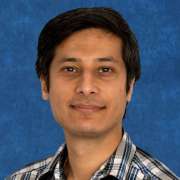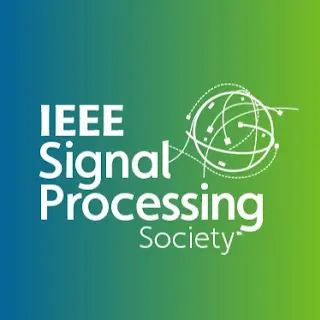Meet SPS Member Arvind Rao


Dr. Arvind Rao
Professor of Computational Medicine and Bioinformatics, Biostatistics, Radiation Oncology,
University of Michigan Ann Arbor. Affiliate faculty in Biomedical Engineering, University of Michigan.
Arvind's Biography:
Arvind Rao is a Professor in the Department of Computational Medicine and Bioinformatics, Biostatistics and Radiation Oncology at the University of Michigan Ann Arbor. He also holds affiliate appointments at the BME department in UM as well as the ECE department at Rice University, Houston Texas. His group uses image analysis and machine learning methods to link image-derived phenotypes with genomic data, across biological scale (i.e. single cell, tissue and radiology data). Such methods have found application in radio genomics, drug repurposing based on phenotypic screens and spatial profiling in tissue, as well as in spatial transcriptomics. Arvind received his PhD in Electrical Engineering and Bioinformatics from the University of Michigan, Ann Arbor specializing in transcriptional genomics, and was a Lane Postdoctoral Fellow at Carnegie Mellon University, specializing in bioimage informatics. He is a Fellow of American Medical Informatics Association (AMIA), The Royal College of Pathology (RCPath) in the UK (by published works) and American Association for Advancement in Science (AAAS).
Why Did You Choose to Become Faculty in the Field of Signal Processing?
Signal processing has always been, to me, the “mathematical microscope” — a precise, versatile way of extracting meaning from complexity. Early in my career, I recognized that the same principles used to process audio or radar data could be reimagined to decode the rich, complex “signals” of biology: from spatial transcriptomics and high-content pathology images to multi-omics profiles in cancer. Becoming a faculty member provided the freedom to advance that vision, integrating classical signal processing, AI, and statistical methods into tools that address critical biomedical and data integration problems.
Just as importantly, academia gave me a platform to contribute to and collaborate with the global IEEE community. My roles as Associate Editor for IEEE/ACM Transactions on Computational Biology and Bioinformatics, member of the IEEE SPS Bio Imaging and Signal Processing Technical Committee, and contributor to the IEEE SPS Education Board and Data Science Initiative have allowed me to connect our field to pressing societal challenges. Through industrial outreach, SPS seasonal school programs and continuing education course development, I have worked to ensure that signal processing advances reach industry, government, and policy — including through my service in India’s VAIBHAV initiative, which builds global research partnerships in national priority areas.
How Does Your Work Affect Society?
At its core, my research transforms complex, multi-modal biomedical datasets into actionable insights that improve patient outcomes, accelerate drug discovery, and strengthen public health decision-making. By integrating AI with robust signal processing and spatial bioinformatics, my team has developed methods for earlier disease detection, patient stratification, and target identification — innovations that benefit both clinicians and patients.
In addition to pursuing these technical advances, I have been committed to capacity-building and global equity as well: leading IEEE outreach initiatives in Kenya, Hyderabad, and Bangalore; designing continuing education programs for industry professionals; and shaping the SPS Data Science Initiative to bridge emerging research with application domains such as healthcare and AI for Biology. These efforts ensure that the benefits of signal processing are not confined to just high-resource settings, but instead reach diverse global communities — in alignment with IEEE’s mission of advancing technology for humanity.
What Challenges Have You Had to Face to Get Where You Are Today?
Working at the intersection of engineering, medicine, and policy means navigating three distinct cultures — each with its own priorities, terminology/vocabulary, and timelines. Early in my career, skepticism was common: Could advanced signal processing or statistical learning methods meaningfully impact healthcare? The path forward required not just publishing strong technical results, but demonstrating clinical and industrial relevance through collaborations with physicians, pharma partners, and policymakers.
My IEEE leadership roles have been instrumental in overcoming these challenges. Through the SPS Education Board, Data Science Initiative, and industrial outreach programs, I have learned how to translate advanced methods into accessible frameworks for decision-makers, design training that works for diverse audiences, and build trust across sectors. These experiences have reinforced the importance of communication, credibility, and interdisciplinary-partnership in realizing impact.
What Advice Would You Give to Scientists/Engineers in Signal Processing?
First, build a versatile conceptual toolkit. The power of signal processing lies in its universality — it can transform problems in communications, medicine, climate science, or finance if applied creatively. Second, in high-stakes domains like healthcare, prioritize interpretability and trust. An algorithm’s sophistication matters far less than the confidence stakeholders place in its output.
Third, engage deeply with professional societies like IEEE SPS. My own career trajectory has been shaped by serving on technical committees, contributing to the Data Science Initiative, and developing continuing education courses for industry. These roles create opportunities to influence the direction of our field, mentor the next generation, and connect research to real-world needs. Finally, think globally: design solutions that can adapt to both advanced laboratories and resource-limited settings.
Anything Else that You Would Like to Add?
The future of signal processing will be defined by boundary-crossing innovation — where our core methods meet new application domains, and where engineering rigor meets societal need. My career reflects this philosophy: advancing AI and signal processing algorithms for cancer bioinformatics with domain-centered principles; designing industry learning programs that translate cutting-edge research into practice; shaping SPS’s global industrial outreach and education strategy; and engaging in science diplomacy through VAIBHAV.
IEEE SPS is uniquely positioned to lead in this “signal processing without borders” future. I am committed to contributing my technical expertise, educational leadership, and global outreach experience to help the Society expand both the frontiers of our science and the breadth of its societal impact.

